Dettagli
Anno di pubblicazione
1659
Luogo di stampa
Florentiae
Autore
Viviani, Vincenzo (1622-1703).
Editori
apud Ioseph Cocchini.
Descrizione
Pergamena coeva
Stato di conservazione
In ottimo stato
Descrizione
VIVIANI, Vincenzo (1622-1703). De maximis et minimis geometrica divinatio in quintum Conicorum Apollonii Pergaei adhuc desideratum...Liber primus (et secundus). Florentiae, apud Ioseph Cocchini, 1659. ---- De locis solidis secunda divinatio geometriae... Opus conicum continens Elementa tractatuum eiusdem Viviani, quibus tunc ipse multa, maxima, et abdita in mathesi theoremata demonstrare cogitaverat, elaboratum anno 1646. Impressum Florentiae ab Hippolyto Navesi anno 1673. Addendis auctum et in lucemprolatum anno 1701... Florentiae, apud Petrum Antonium Brigonci. 4 parti in 2 volumi in-folio legati assieme in pergamena coeva. Bell' esemplare di entrambe le opere. Ex libris Sebastiano Canterzani (1734-1819), professore di matematica a Bologna. (I). (xvi), 154 pp.; (iv), 154, (2) pp. Alcuni diagrammi incisi in legno n.t. e 4 tavole incise in rame. Edizione originale. "A most able restitution of the lost fifth book of the Conic Sections of Apollonius Pergaeus made previously to the discovery by Borelli of its existance in an Arabic version. When the Latin version of that was published (1661), and geometricians were able to compare the two works, Viviani's reputation became immense, as it was rendered clear that not only had he divined what Apollonius wrothe, but had gone much deeper into the subject. This is the rarest of Viviani's works... Viviani, the pupil of Galileo, was oneof the best geometricians of his day"(Libri, Catalogueof the Mathematical Library, 3138). Riccardi, Biblioteca matematica italiana, II, 625: "Raro e pregiato". Cinti, Biblioteca Galileiana, 135. (II). (xxvi), 164 pp.; 128 pp. With fine portrait of Galileo engraved by F.A. Lorenzini, and 2 double-page engraved pletes. First edition. "Viviani's first project was an attemped restoration of a work by Aristaeus the elder, De Locis solidis secunda divinatio geometrica, which Viviani undertook when he was twenty-four. Aristaeus' work is believed to have been the first methodical exposition of the curves by Menachmus; but since it has been entirely lost, it is difficult to estimate how close Viviani came to the original work" (A. Natucci in Dictionary of scientific biography, XIV, pp. 48-49). Riccardi, Biblioteca matematica italiana, II, 629: Bella e rara edizione". Libri, Catalogue of the Mathematical Library, 3139. Carli & Favaro, Bibliografia Galileiana, 400. Cinti, Biblioteca Galileiana, 167.
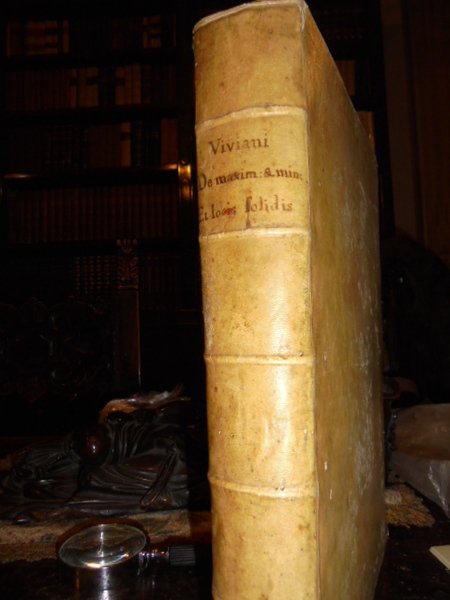
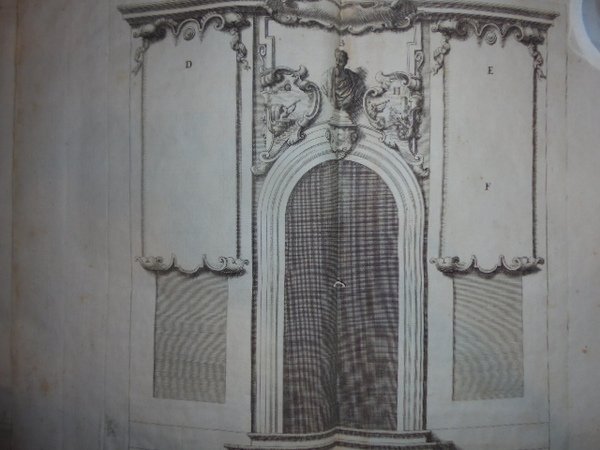
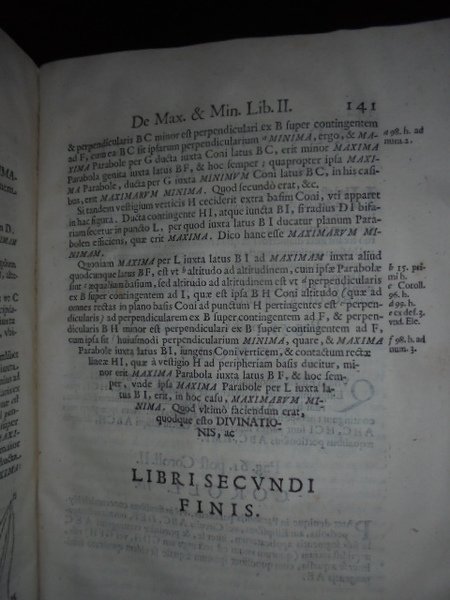
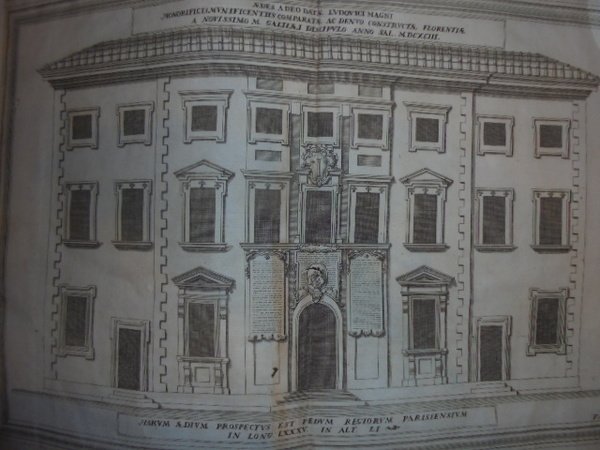
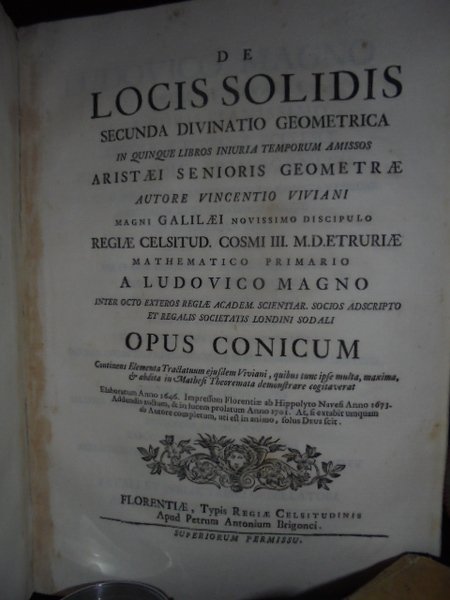
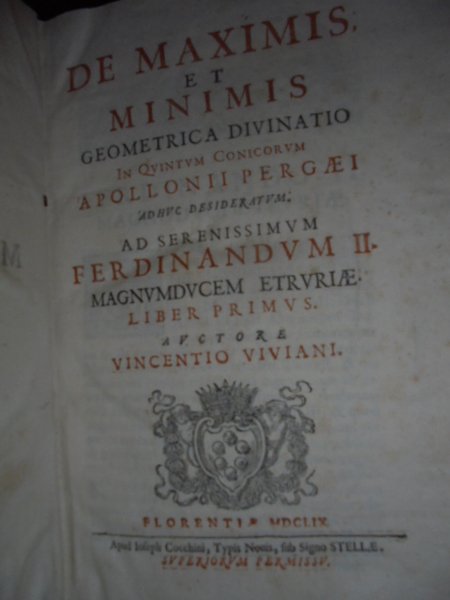
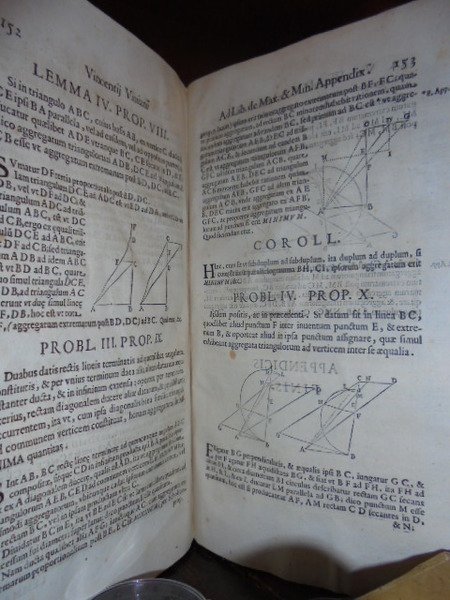
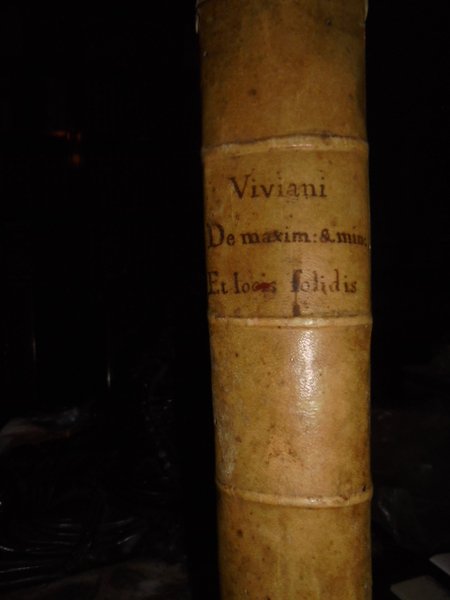
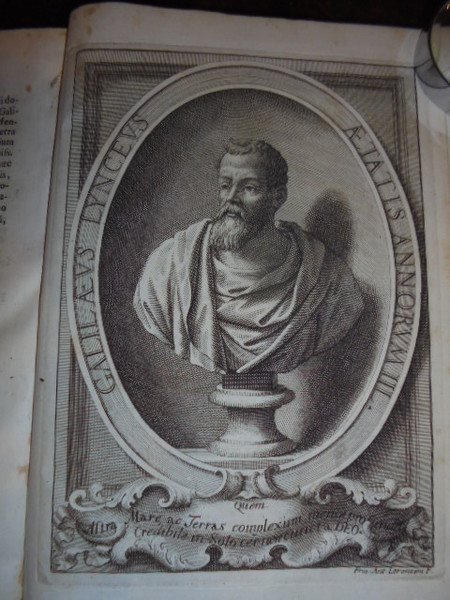
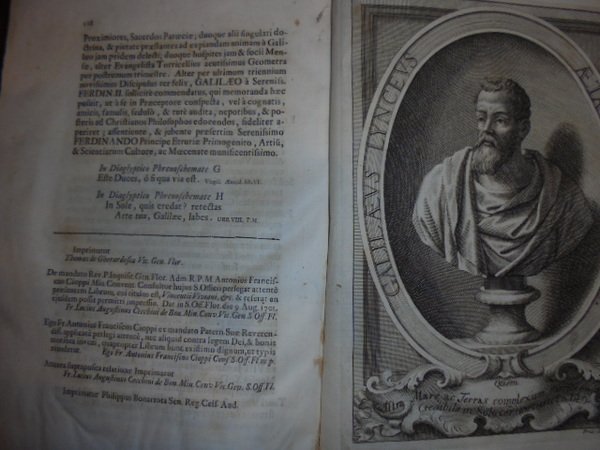
Scopri come utilizzare
Scopri come utilizzare

